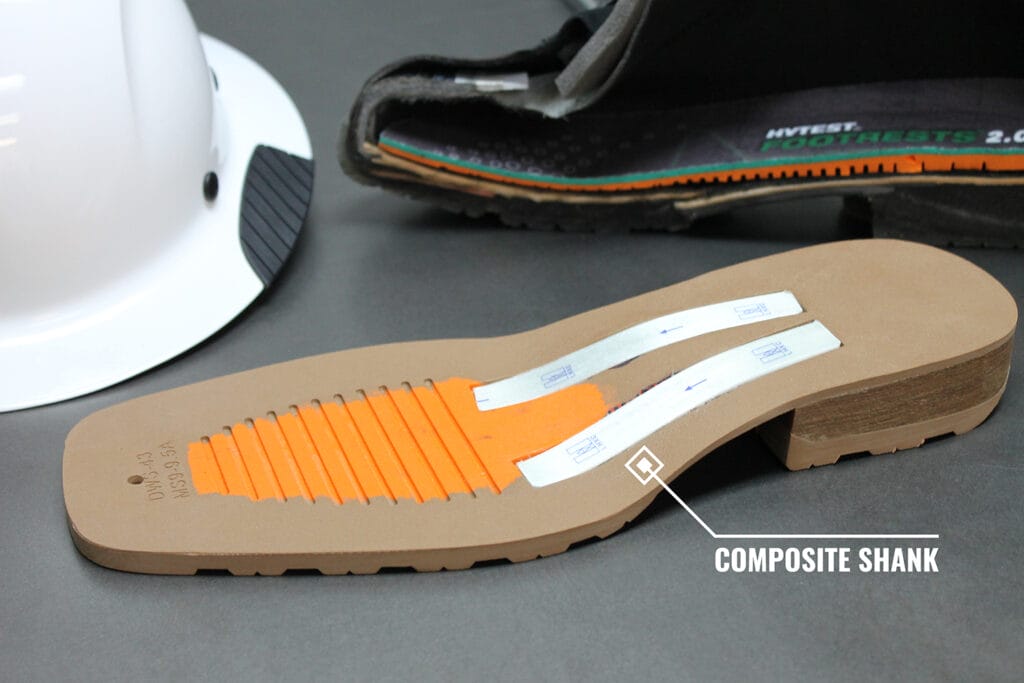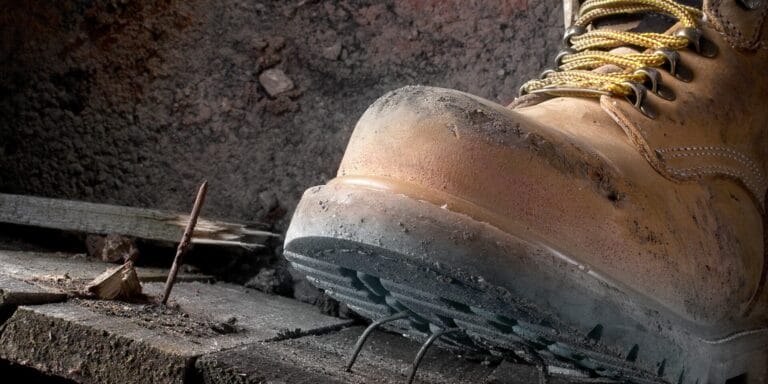As you prepare for a demanding day of work or an adventurous outing, it’s easy to underestimate the significance of what appears to be ordinary footwear. However, your boots are far from ordinary; they’re equipped with a bunch of safety features but there is one that is particularly hidden from the rest. A true piece of wellness and protection – That’s right we are talking about the Shank. Not to be confused with the ones you’d find at your local hunting store. These subtle, unassuming features are tucked away within your shoes, ready to provide you with all the support you need for your everyday task.
So, What Exactly Is a Shank?
Shanks are structural reinforcements hidden within the midsole of your safety footwear. They’re typically made of steel, composite material, or fiberglass. Much like the toe cap in your boots, they are offered in various materials to cater to different work environments. Take airport workers, for instance. Their job involves passing through metal detectors regularly, and having non-metallic shanks in their safety boots are essential to avoid setting off alarms and streamlining security processes. For construction workers, steel provides maximum protection against heavy objects, while fiberglass or composite are preferred by electricians, as they offer electrical hazard resistance.
Beyond the materials, the placement of this safety feature is a key factor in ensuring that your boots offer the right balance of support and comfort. Positioned between the insole and the outsole, running from the heel to the ball of the foot, shanks serve to reinforce the arch, preventing it from collapsing under pressure. Similarly, the number of shanks incorporated is determined by the intended use and the specific industry requirements.

In recent years the external shank has been introduced. This innovative design is distinct from the traditional internal placement. Engineered to provide additional lateral support, it also allows for greater freedom of movement in the foot, making it a valuable addition to the evolving world of safety footwear.
Why Do I Need a Shank?
Contrary to belief, NOT ALL boots have shanks in them. Generally speaking, they are found in boots with thicker contoured soles and heel gaps. Wedge boots, for example, are known for their flat soles, which are intended to provide inherent stability for various tasks. For this reason, most wedge boots don’t have this safety feature.
But with this in mind, when it comes to the safety industry, having boots with a shank should be the default choice for anyone on the job. The reason is simple: there’s never really a situation where you wouldn’t benefit from one. They provide that extra layer of support and stability that can make all the difference during long, demanding workdays. They also help prevent your foot from twisting or bending unnaturally, reducing the risk of sprains and torsional injuries. Think of them as the sturdy spine of your footwear.
And while it’s natural to be concerned about added weight in your footwear, the truth is that the extra ounces from these features are incredibly insignificant when compared to the benefits they offer. They defend against punctures and ensure that nails, glass, or other potential hazards don’t penetrate the sole of your shoe and reach your foot. When you consider the pros and cons, the scale tips heavily in favor of shanks, as they can make all the difference between a minor inconvenience and a serious injury. The added peace of mind and reduced strain on your feet make the slight weight increase worthwhile.
Luckily, you never have to wonder what safety features your boots come equipped with. On every Work Wear Safety Fact Tag, you will find all the details you need, including if it has a shank and the type. It’s our way of making sure you have the right gear for the job! Click here to download our Safety Features PDF and keep an eye out for these symbols when shopping at your local Work Wear Safety retail store.




